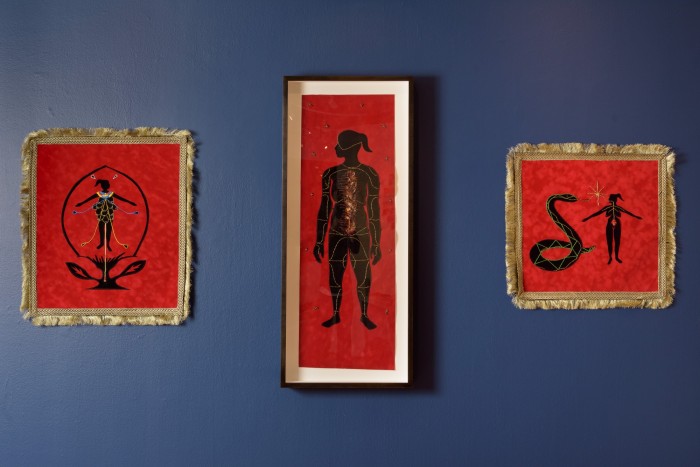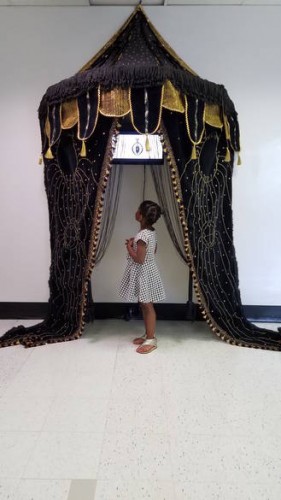Shervone Neckles is an interdisciplinary artist, educator, community worker and a first-generation Caribbean-American raised in Brooklyn by Grenadian parents. Her work embraces collage, alternative printmaking techniques, animation, book arts, installation, sculpture and community wellness initiatives. Neckles’ has held residencies at the Youlou Arts Foundation in St. Vincent and the Grenadines, West Indies; The Elizabeth Foundation in New York; The Center for Book Arts in New York; The Fabric Workshop & Museum in Pennsylvania; The Skowhegan School of Painting and Sculpture in Maine; and the Vermont Studio Center in Johnson, Vermont. Awards include grants from The Foundation for Contemporary Art; Queens Council on the Arts; The Puffin Foundation; Joan Mitchell Foundation; and Fellowships from Robert Blackburn Printmaking Workshop and Manhattan Graphics Center. Her work has exhibited worldwide in both group and solo exhibitions and is in collections such as The Schomburg Center for Research in Black Culture; The Center for Book Arts; The Fabric Workshop and Museum; and the College of New Rochelle. Neckles’ practice includes curatorial projects such as Amplify Action: Sustainability in the Arts with Pratt Center Community Development and Bedford-Stuyvesant Restoration Corporation in Brooklyn, NY; and From Taboo to Icon at the Ice Box Galley in Philadelphia, PA. Neckles earned an MA from Teacher’s College, Columbia University; MFA from Queens College; and BFA from The College of New Rochelle. Neckles currently lives with her partner, artist José M.Ortiz, and her four year old son in Queens, New York.
NLE Lab: Southeast Queens Biennial
The series Give and Take/Terciopelo weaves together references to the natural world, scientific concepts, and objects and practices rooted in Afro-Caribbean traditions. The title of the series derives its name from a rare tree species native to Central America that contains both a powerful toxin and its own antidote—a concept that is reinforced throughout the work with the use of snakes, whose venom can be used as both poison and remedy. Terciopelo, the Spanish term for velvet, is also the name given to the venomous snakes found in the sugar cane and plantation fields in the Caribbean.
ART ZONE CG-91

Left to Right: Shervone Neckles Give & Take/Terciopelo: Germinate, 2014-16 24 x 25.5 inches Mixed media: velvet, embroidery thread, fabric trim and notion Shervone Neckles Give and Take/Terciopelo: Touched, 2014-16 Mixed media: velvet, embroidery thread, fabric trim and notion 25 x 24.5 inches Shervone Neckles Give and Take/Terciopelo: Bush Woman, 2014 Mixed media: velvet, embedded spices and herbs with embroidery thread, fabric trim and notion 19 x 44 inches All works courtesy of the artist

